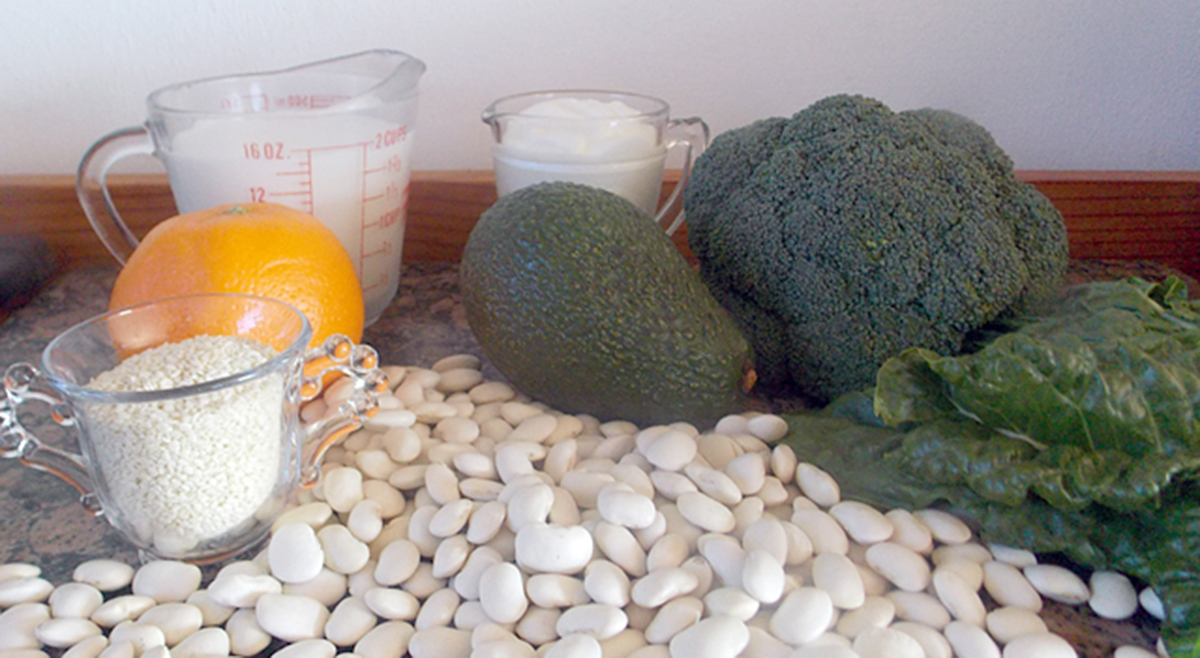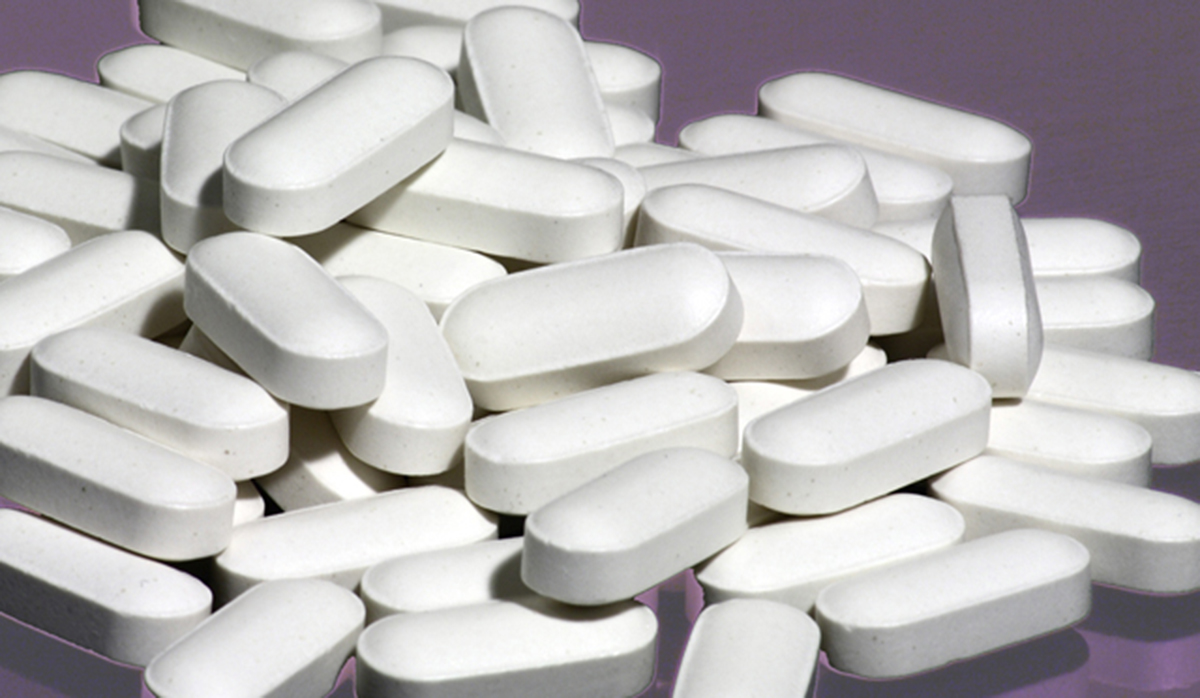Almost all the calcium found in the body is stored in our bones and teeth; just one percent is found in our blood and other body tissues.
But how do we get the calcium we need, and how much do we need?
How The Body Gets Calcium

The best way to get calcium is to eat calcium-rich foods, including dairy products (milk, yogurt, cottage cheese), dark leafy greens (particularly spinach, kale, bok choy and morogo), broccoli, green peas, beans (like broad beans and black-eyed beans), avocado pears, salmon and sardines, oranges, sesame seeds, and almonds.
According to the Mayo Clinic, many people who appear to be eating a healthy and balanced diet don’t get enough calcium. They include:
- Vegans, because they don’t eat dairy products
- Those who have lactose intolerance or who limit their intake of dairy products
- Anyone who eats a lot of protein or sodium (salt) because this can result in the body excreting calcium
- People suffering from osteoporosis
- Those receiving corticosteroid treatment long term
- People with certain digestive or bowel diseases (including celiac and inflammatory bowel disease) that decrease the body’s ability to absorb calcium
These are the people who probably need to take calcium supplements, though the Clinic warns that it should be under the guidance or care of a doctor or dietician.
There are numerous calcium supplements available, many of which also contain vitamin D, which is vital for bone health as well, and which seems to work best when paired with calcium. Some supplements also contain magnesium, a mineral that is also essential for good bone health.
The two main types of calcium supplement are calcium carbonate (which contains 40 percent elemental calcium, the actual amount of the mineral contained in a unit) and citrate (which contains 21 percent.) The photograph on the next page shows 500 mg calcium carbonate supplement tablets.
When the body doesn’t get enough calcium, it has to rely on the calcium stored in the bones. When people under about 30 years are healthy, any calcium “borrowed” from the bones will be replaced at a later stage. But when people don’t get enough calcium, and don’t do enough exercise, this doesn’t always happen.
As a recent Harvard School of Public Health report states: While bone production is greater than “bone destruction,” until the age of about 30, thereafter the opposite is true. So it is perfectly normal for people to lose bone as they get older, even if they are taking the recommended amount of calcium every day.
READ Osteoporosis Can Strike at Thirty
The challenge is to maximize bone stores early in life, which will help to minimize osteoporosis and other low bone mass problems. However, even this won’t necessarily do anything to lessen the risks of fracture, particularly in later life as research has found (see next page.)
How Much Calcium Do We Need?
The Institute of Medicine’s National Academy of Sciences recommendations start at 200 mg for those up to six months rising to 1,200 for those over 70; 1,000 mg for ages 19-50 and pregnant or lactating women, and those from 4 to 8 years; and 1,200 mg for women aged 50 plus.
In some countries including Japan, India and Peru, the general daily intake of calcium is remarkably less than a third of the US recommendation, yet the recorded incidence of bone fractures is relatively low. Researchers at Harvard think this might be due to additional factors including the degree of physical activity people generally get as well as the amount of sunlight (and therefore vitamin D) they are exposed to.
How Much Calcium Is Safe and Healthy?
While it is universally agreed that calcium plays a vital role in terms of maximizing the strength and health of our bones, there is an ongoing debate in terms of how much calcium optimizes health and how much is in fact safe. Further, there is increasing scientific evidence that high calcium intake, whether in the diet or via supplements, does not lessen the risk of fractures or lower the risk of osteoporosis.
Evidence That Calcium Doesn’t Prevent Fracture Risks
Even though many clinical investigations have shown that calcium supplements effectively retard bone loss in adult women, there are numerous studies that contradict these findings. For example, a major 12-year study that looked at the association between dietary calcium, milk and bone fractures in women found that drinking more milk and consuming increased food containing calcium did not protect against forearm or hip fractures. The Harvard study led by professor of medicine Diane Feskanich involved 77,761 women (all nurses) aged 34 to 59 who had never taken calcium supplements.

A different, equally large Harvard study published the same year involved male health professionals. Researchers investigated the relationship between calcium intake (in both foods and supplements) by these adult men and hip and forearm fractures – and none was found. In other words, it made no difference whether they had taken calcium or not.
Dr. Feskanich and two colleagues did another study over 18 years that analyzed more than 72,000 postmenopausal women and their diets and use of nutritional supplements. The results published by the American Society for Clinical Nutrition in 2003 assessed milk consumption as well as calcium and vitamin D intake in relation to the risks of hip fracture. While vitamin D appeared to lower the risk, specifically of osteoporotic hips fractures, milk and calcium did not seem to reduce risk.
In 2007 Heike Bischoff-Ferrari from Harvard’s Department of Nutrition and others published an interesting meta-analysis of various cohort studies and clinical trials relating to calcium intake and the risks of hip fracture in both men and women. They concluded that in addition to the fact that there was no evidence to prove that calcium supplementation reduced the risk of hip fracture there could even be an increased risk of fracture, particularly if the calcium was taken without vitamin D.
READ Vitamin D - How Much Do We Need And How Do We Get It?
In response to the Heike Bishoff-Ferrari study report, Jeri W. Nieves and Robert Lindsay (from the Departments of Medicine and Epidemiology at Columbia University, New York and Clinical Research Center at Helen Hayes Hospital also in New York) commented that bone was “not just calcium” and that calcium doesn’t function in isolation. Their take was that not only are calcium and vitamin D essential for “significant reductions in nonvertebral fractures,” but there is a need for people to have a “well-rounded diet.” This should also include protein that will help prevent fractures and heal breaks when they happen, and fruit and veg for good overall health.
Continuing on her mission to focus on calcium, last year (2014) Dr. Feskanich and several Harvard colleagues published further research findings, this time relating to milk consumptions of teenagers and the later risk of hip fractures once they were older. Participants included women from the two 1997 Harvard studies (see above). Again they found that there was no association between teenagers drinking more milk and a lower risk of hip fracture later in life.
Dangers Of Too Much Calcium
An increasing number of research studies show that anyone who takes more than 1,000 to 1,200 mg of calcium every day (particularly in the form of supplements) has an increased risk of stroke and heart attack. What they have found is that if there isn’t enough vitamin D to help absorb the calcium, any excess will settle in the arteries and not in the bones. This can cause a range of abnormalities including mood disorders, muscle pain, kidney stones, abdominal pain, and can ultimately be a threat not only to the heart, but to the brain as well.
Medical professionals advise that anyone suffering from hypercalcemia, which causes excess calcium to form in the bloodstream, should definitely avoid calcium supplements.
One study published in the British Medical Journal in 2010 considered the effects of calcium supplements on cardiovascular events and the risk of myocardial infarction, and found that it was a definite risk. A total of 15 trials were randomized for the study, and cardiovascular outcomes were acquired from hospitals, death certificates, and self reports. In the light of these findings, senior research fellow, Mark J. Bollard and his team recommended that the role of calcium supplements in osteoporosis management should be reassessed.
A study undertaken by the German Research Center in Heidelberg two years later considered the same issue. Their finding was that increasing calcium in the diet might not be beneficial to the heart and that calcium supplements could increase the risks of myocardial infarction.
As with so many other medical issues, it seems that considerably more research is needed.
- www.hsph.harvard.edu/nutritionsource/calcium-full-story/
- www.ncbi.nlm.nih.gov/pmc/articles/PMC1380936/pdf/amjph00505-0106.pdf
- www.ncbi.nlm.nih.gov/pubmed/18065599
- www.bmj.com/content/341/bmj.c3691
- www.ncbi.nlm.nih.gov/pubmed/22626900
- www.ncbi.nlm.nih.gov/pubmed/19757413
- www.ncbi.nlm.nih.gov/books/NBK56058/
- www.niams.nih.gov/Health_Info/Bone/Bone_Health/Nutrition/
- ajcn.nutrition.org/content/77/2/504.full
- www.ncbi.nlm.nih.gov/books/NBK56058/
- health.clevelandclinic.org/2014/05/supplements-taking-many-can-hurt/
- www.mayoclinic.org/healthy-lifestyle/nutrition-and-healthy-eating/in-depth/calcium-supplements/art-20047097?pg=2
- Photograph of calcium-rich food © Penny Swift Photograph of calcium supplements courtesy of Wikipedia
- Important notification about information and brand names http://www.steadyhealth.com/polices/terms-of-use#copyright

